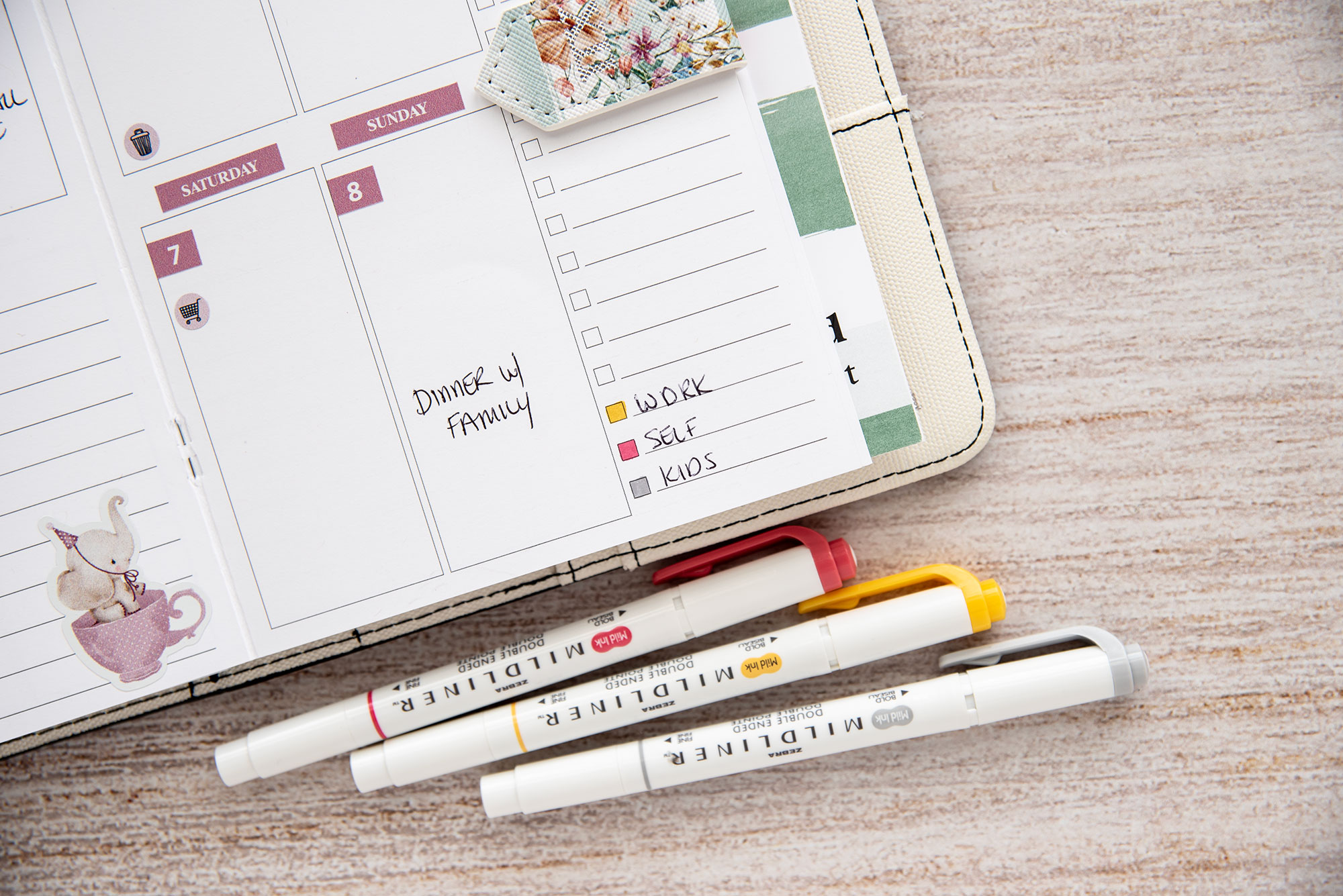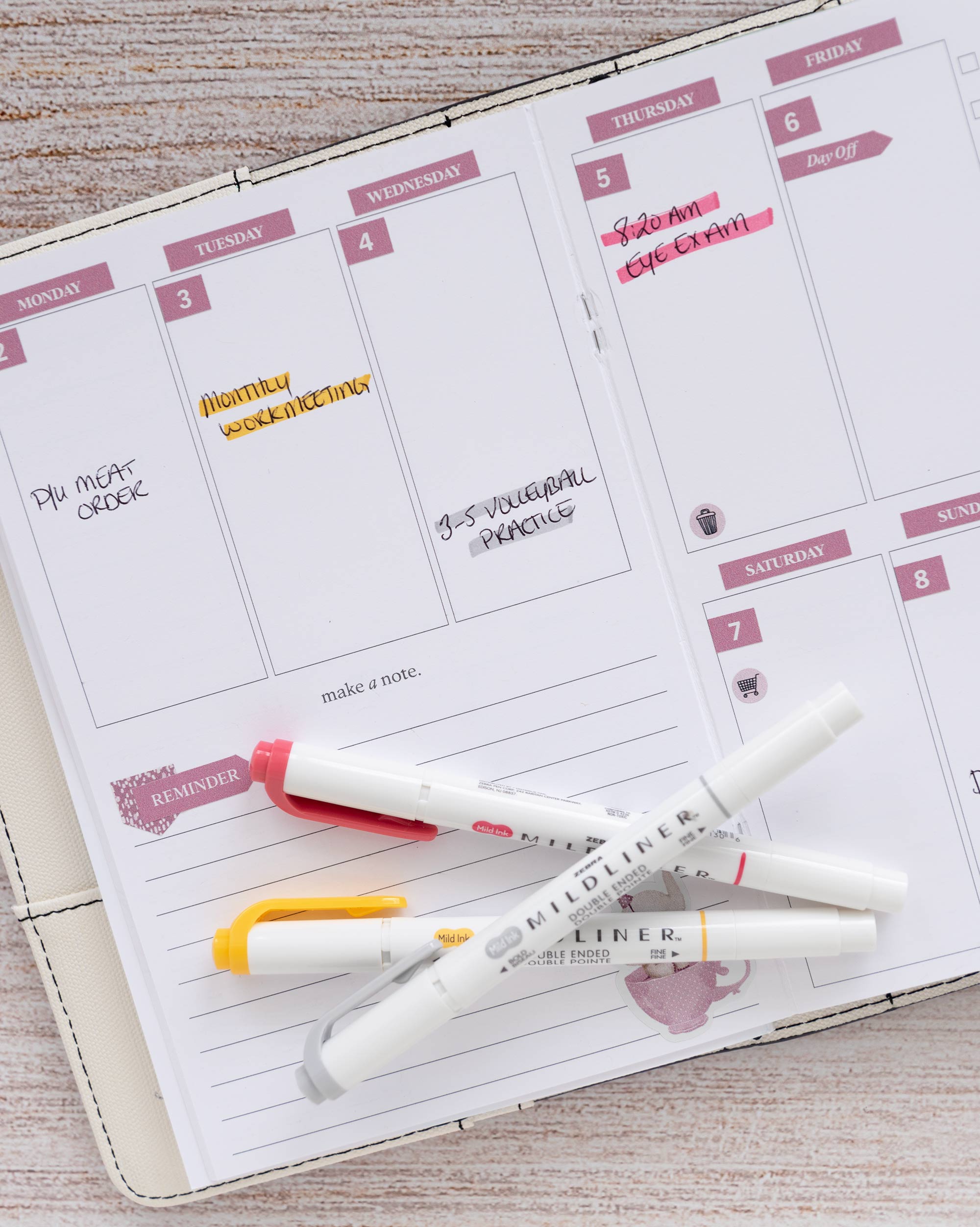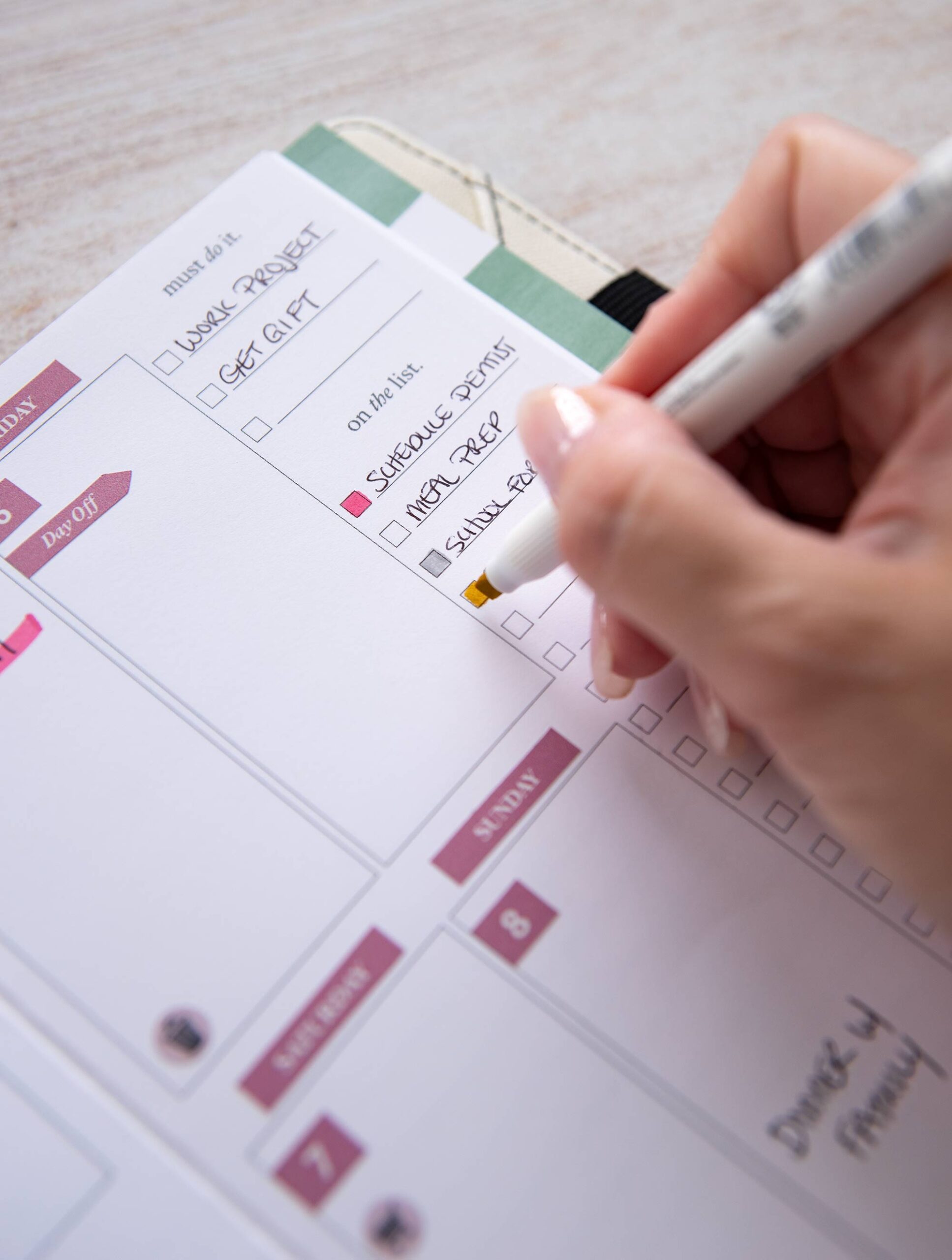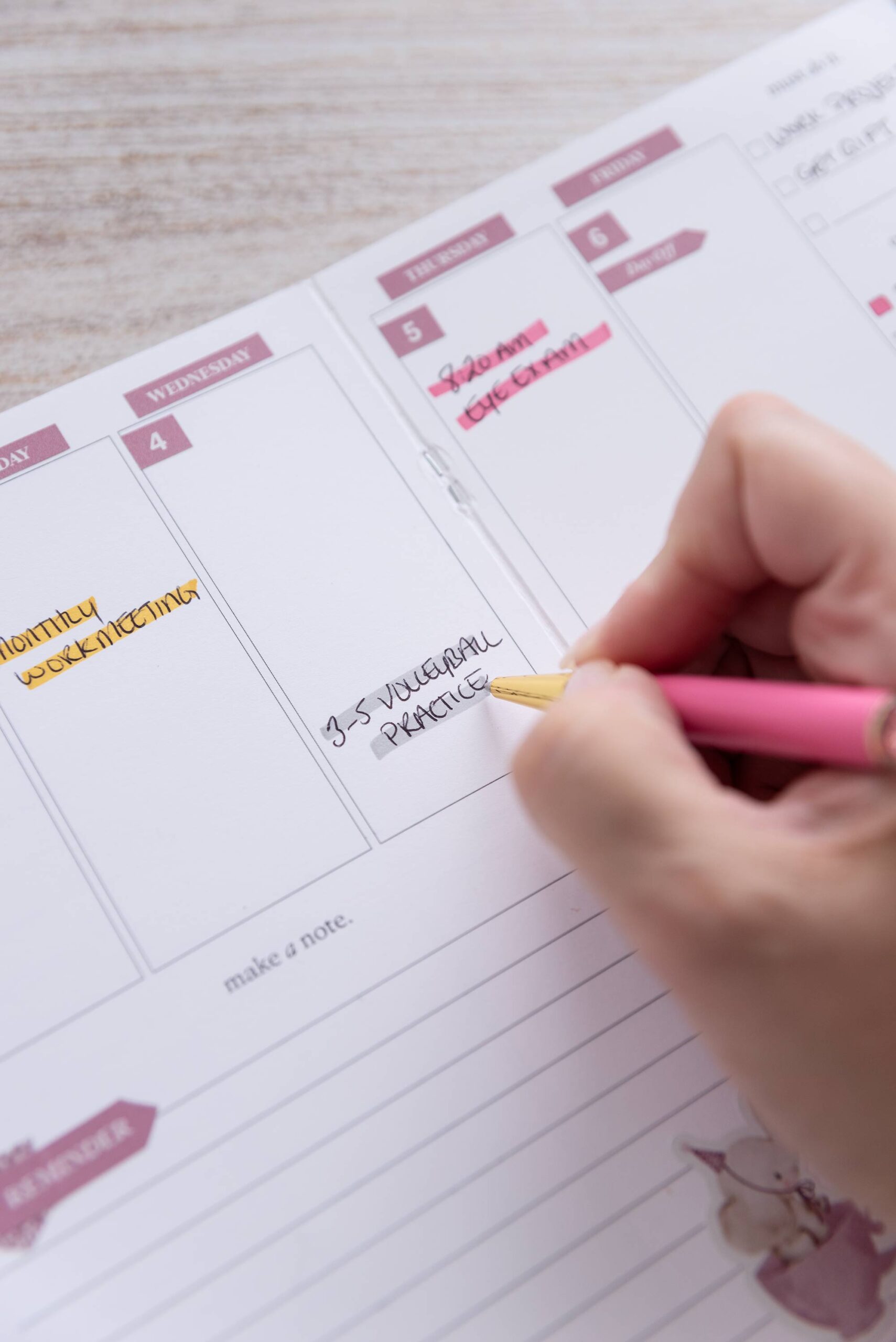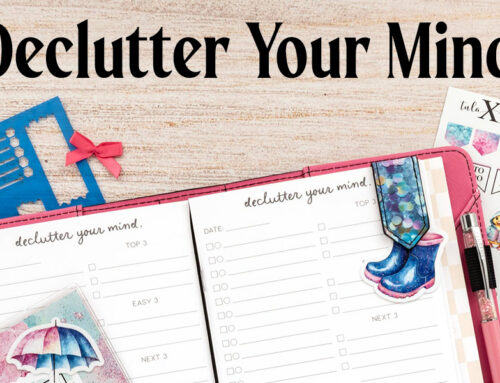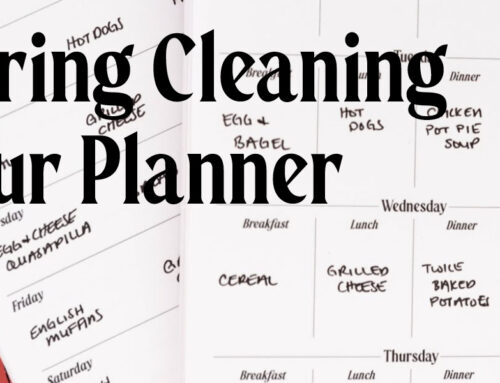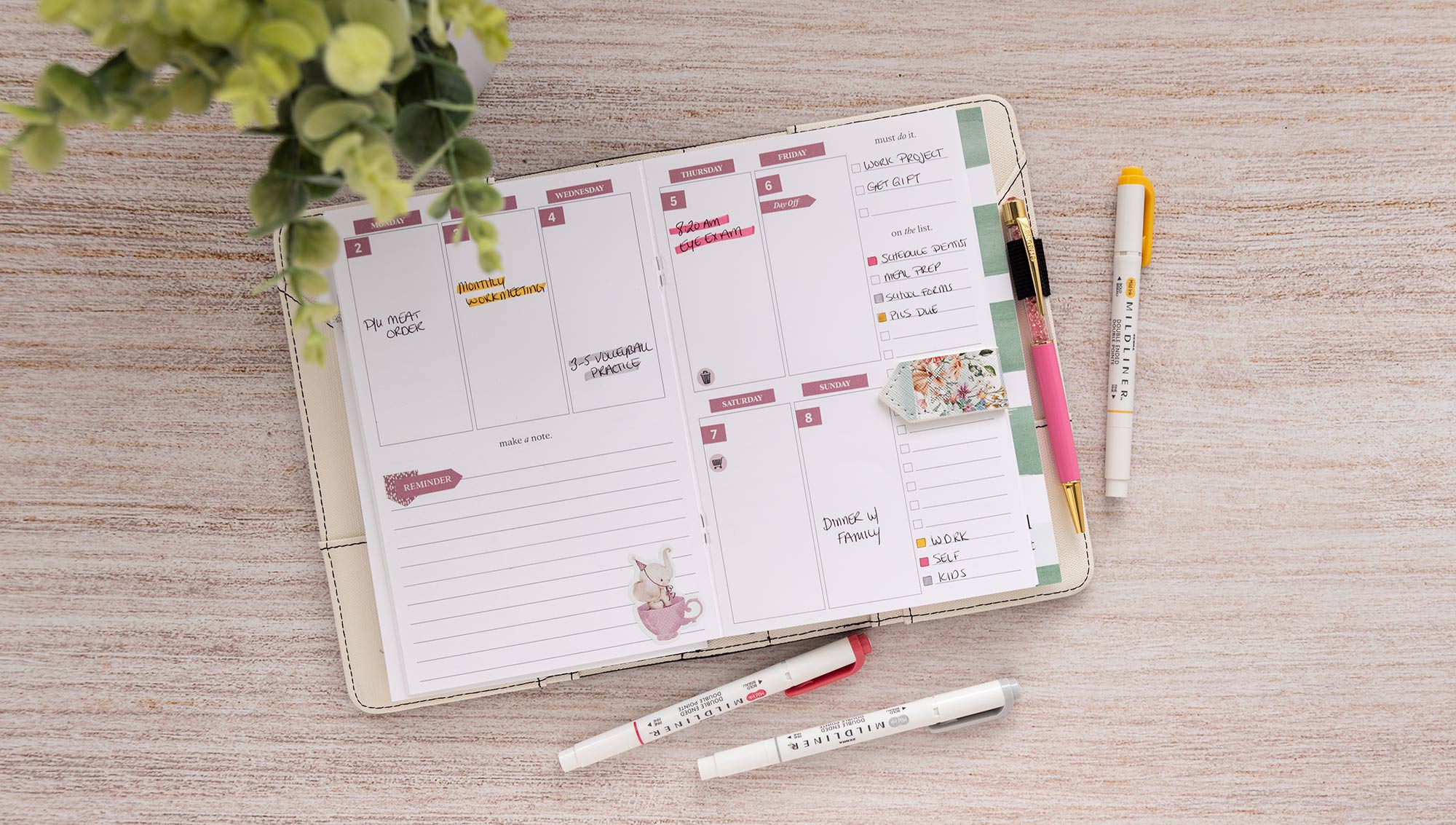
In the whirlwind of modern life, staying organized can feel like a Herculean task. From work deadlines to social events, and everything in between, it’s easy for things to slip through the cracks. Enter: the humble planner, your trusty sidekick in the battle against chaos. But why stop at just your planner when you can harness the power of color coding to take your organization game to the next level? In this post, we’ll explore the myriad benefits of color coding your planner and provide you with practical tips on how to do it effectively.
Benefits of Color Coding:
- Visual Organization: By assigning different colors to various aspects of your life, such as work, personal, health, and social commitments, you create a visual roadmap of your schedule. This makes it easier to quickly identify and prioritize tasks at a glance, reducing the risk of overlooking important deadlines or appointments.
- Increased Productivity: Color coding helps streamline your workflow by highlighting tasks and events based on their urgency or category. This enables you to allocate your time and energy more efficiently, focusing on high-priority items while minimizing distractions.
- Mental Clarity: The act of categorizing tasks and events using color coding can have a calming effect on the mind. Instead of feeling overwhelmed by a jumble of to-dos, you gain clarity and a sense of control over your schedule. This can lead to reduced stress levels and improved overall well-being.
- Enhanced Creativity: Color stimulates the brain and encourages creative thinking. By infusing your planner with a vibrant array of hues, you not only make it more visually appealing but also tap into your creative side. This can inspire innovative approaches to problem-solving and project planning.
How to Color Code Your Planner:
- Choose Your Color Palette: Select a set of colors that resonate with you and align with your organizational needs. Consider using different colors for distinct categories, such as work, personal, family, health, and leisure activities.
- Establish Key: Create a legend or key to indicate what each color represents. For example, blue could signify work-related tasks, green for personal errands, red for important deadlines, and so on. Keep it simple and intuitive for easy reference.
- Be Consistent: Consistency is key to effective color coding. Assign the same color to similar types of tasks across different days and weeks to maintain clarity and continuity in your planner.
- Use Highlighters or Pens: Invest in quality highlighters or colored pens to bring your color coding system to life. Experiment with different shades and styles to find what works best for you.
- Review and Revise: Regularly review your color coding system to ensure it’s still meeting your needs. Don’t be afraid to tweak or adjust your color palette as your priorities evolve over time.
Conclusion: Color coding your planner isn’t just about making it look pretty; it’s a powerful tool for boosting productivity, reducing stress, and bringing order to the chaos of everyday life. By harnessing the visual language of color, you can transform your planner into a personalized roadmap for success. So why wait? Grab your favorite pens, unleash your creativity, and start color coding your way to a more organized and fulfilling life.
